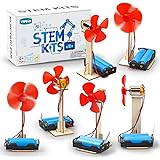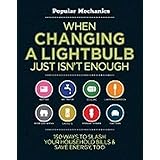Mastering Outstanding DIY Backyard Projects and Outdoor Home Decor
There is a certain satisfaction derived from transforming one’s immediate surroundings with one’s own hands, a sentiment often amplified when considering the outdoor living spaces that enhance daily life. Many homeowners, myself included, have found immense joy in taking raw materials and shaping them into functional or aesthetically pleasing elements for their backyard. The video above provides a wonderful visual inspiration for numerous quick and effective DIY backyard projects, showcasing how various materials can be cleverly utilized to create captivating outdoor home decor elements. The emphasis here is often placed upon ingenuity and the repurposing of common items, yielding results that are both unique and personal.
Embarking on such endeavors not only fosters a connection with one’s environment but also presents an opportunity for significant cost savings compared to commercially purchased items. The act of creation itself becomes a meditative process, allowing for a deep engagement with the materials and the design. Through a combination of practical garden hacks and innovative crafting techniques, a drab outdoor area can be revitalized into an inviting sanctuary. The following sections are intended to provide an expert perspective on these outstanding DIY backyard projects, delving into the nuances of material selection and methodological execution that elevate simple crafts into lasting contributions to your outdoor aesthetic.
1. Innovative Cement and Gypsum Creations for Your Outdoor Space
The utilization of cement and gypsum in outdoor crafting has become an increasingly popular trend, largely due to their durability and the versatility offered in molding various forms. When considering these robust materials for DIY backyard projects, the selection of the correct mix ratio is paramount to ensuring structural integrity and longevity. For instance, the video’s mention of “1.5 LITERS WATER” alongside “ORTHOPRINT 450g” suggests a specific, controlled mixture often employed for fine detail or rapid setting, common in impression-taking or small-scale sculptural work. Achieving an optimal consistency is critical; a mixture that is too wet may compromise strength, while one that is too dry might hinder proper mold filling and lead to brittleness.
Gypsum, often referred to as plaster of Paris when finely ground, is typically chosen for its quick setting time and ability to capture intricate details, making it ideal for decorative items that are not exposed to extreme weathering. Conversely, cement-based mixtures, potentially utilizing a Portland cement composite, offer superior weather resistance and load-bearing capabilities, making them suitable for planters, stepping stones, or small garden sculptures. The “WAIT 1 HOUR” instruction for setting underscores the importance of allowing adequate cure time before demolding, preventing breakage and ensuring the piece achieves its maximum hardness. Proper curing, which sometimes involves keeping the material moist for several days, significantly enhances the durability of cement-based outdoor home decor, ensuring it withstands the elements for years to come.
2. Elevating Your Garden: Smart Hacks for Plant Health and Pest Management
Maintaining a vibrant garden often involves more than just regular watering and sunlight; it necessitates a proactive approach to plant nutrition and pest control, areas where ingenious DIY backyard projects truly shine. The use of “GARLIC” to “WARDS OFF BUGS” is a time-tested horticultural practice, leveraging the natural sulfur compounds present in garlic. These compounds can act as a natural repellent against various garden pests, including aphids and slugs, when garlic-infused sprays are applied to plant foliage or cloves are strategically planted nearby. This organic method offers a sustainable alternative to chemical pesticides, contributing to a healthier garden ecosystem.
Furthermore, the mention of “RICE” for “YUMMY PLANT FOOD” hints at the beneficial properties of rice water, which is rich in starches, amino acids, and vitamins. When fermented or simply used as a direct watering solution, rice water can provide a mild, slow-release nutrient boost to plants, supporting microbial activity in the soil and promoting robust growth. This type of repurposing, utilizing common kitchen scraps, exemplifies a sustainable approach to garden care, minimizing waste while maximizing plant vitality. The “FREEZE” instruction could relate to preserving liquid nutrient solutions for future use, ensuring that these beneficial concoctions are readily available when needed by your plants.
3. Repurposing for Purpose: Sustainable DIY Decor Ideas
A hallmark of effective DIY backyard projects is the creative repurposing of materials that might otherwise be discarded, transforming them into functional and appealing outdoor home decor. The simple “BABY FOOD JAR” provides an excellent example of a container that can be repurposed into miniature lanterns, seed starters, or small decorative planters. Their compact size and sturdy glass construction make them ideal for a multitude of uses, often requiring only minor modifications such as painting or adding a hanger. The concept of “SAVE FOR LATER” encourages a mindful approach to waste reduction, where potential crafting materials are identified and stored for future projects, rather than being immediately disposed of.
The “SPONGE / NO SPONGE” suggestion, while brief in the video, can be interpreted in various ways, from using sponges as moisture wicks in planters to creating unique texture elements in cement crafts. Biodegradable sponges, for instance, could be incorporated into potting mixes to improve water retention, highlighting an eco-conscious dimension to DIY. These small, often overlooked items possess significant potential for transformation, contributing to a broader movement of sustainable living through clever redesign. Such innovative thinking allows for the creation of distinctive pieces that reflect an individual’s commitment to both aesthetics and environmental stewardship.
4. Essential Considerations for Effective Backyard DIYs
Successfully executing outstanding DIY backyard projects requires not only creative vision but also an understanding of practical considerations that ensure safety, durability, and integration with the existing landscape. Prior to commencing any outdoor home decor initiative, a thorough assessment of the project’s exposure to weather elements is crucial. Materials and finishes must be selected for their resistance to UV radiation, moisture, and temperature fluctuations to guarantee longevity. For example, while gypsum is excellent for intricate details, it typically requires sealing or a sheltered location if destined for outdoor use, unlike cement which intrinsically possesses greater weather resilience.
Adherence to proper safety protocols is also non-negotiable; this includes wearing appropriate personal protective equipment, such as gloves and eye protection, especially when working with power tools or caustic materials like cement. Furthermore, the aesthetic coherence of new additions within the existing backyard design should be carefully considered. Elements should complement, rather than detract from, the overall theme and scale of the outdoor living space. By focusing on these critical aspects—material suitability, safety, and design integration—the journey of undertaking DIY backyard projects becomes not only rewarding but also results in enduring and beautiful outdoor enhancements.







